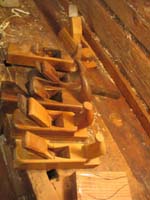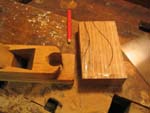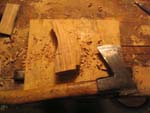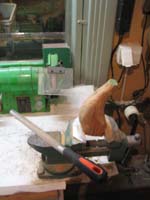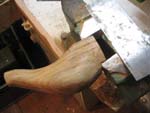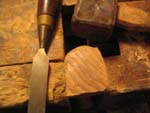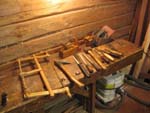Hello Forum,
Unfortunately, the conversion of the old wooden coffin bodied plane I had into a scrub was not to be, as its beyond repair. I am thinking of getting the wooden Scrub plane made by ECE with white beech sole ECE-nr. 106S, from Dieter Schmid - Fine Tools, but I'm a bit concerned with this handle at the front business, Are they easy to use?
Also I only have a waterstone for sharpening my blades at present , can I sharpen a cambered blade on it?
I have just ordered a stanley foreplane from D&M tools would it be possible/advisable to use a cambered blade in this plane as an alternative to buying a scrub?
So many questions as always, maybe soon I'll know enough to answer a few. Thanks , paulc.
Unfortunately, the conversion of the old wooden coffin bodied plane I had into a scrub was not to be, as its beyond repair. I am thinking of getting the wooden Scrub plane made by ECE with white beech sole ECE-nr. 106S, from Dieter Schmid - Fine Tools, but I'm a bit concerned with this handle at the front business, Are they easy to use?
Also I only have a waterstone for sharpening my blades at present , can I sharpen a cambered blade on it?
I have just ordered a stanley foreplane from D&M tools would it be possible/advisable to use a cambered blade in this plane as an alternative to buying a scrub?
So many questions as always, maybe soon I'll know enough to answer a few. Thanks , paulc.

































